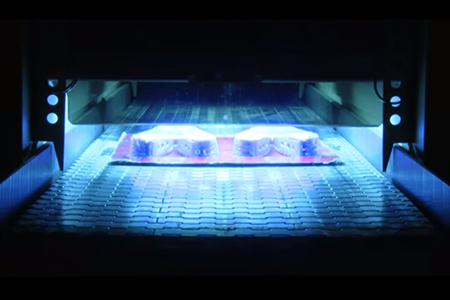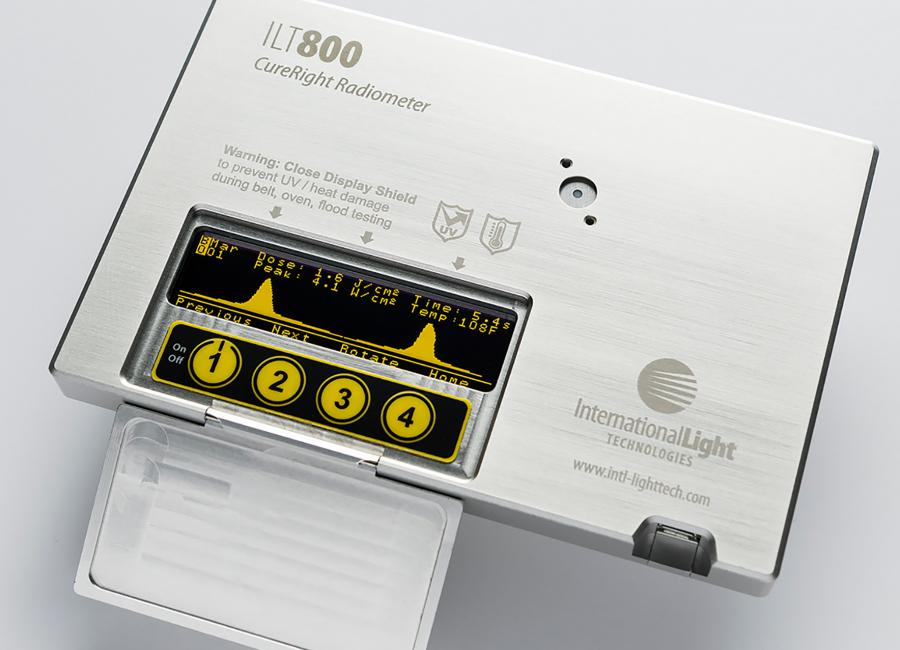
As the world’s population continues to expand, so too does the demand for goods; and the world wants them fast and cheap. To keep up with the increase in demand, manufacturers are constantly looking to increase their output by shortening the production time while keeping costs low.
One troublesome bottle neck is the use of inks, paints, adhesives, and other coatings in production, since these need time to set properly. This may entail simply waiting for the product to set, which could take minutes to hours, or attempting to accelerate the process with various methods such as forced air drying or oven baking. The gains in production experienced with these acceleration methods are often minimal and adaptation and use is typically costly.
The implementation of UV curable photoinitiator-based materials allows for a faster, more adaptable, more reliable, and less expensive alternative to air/heat drying. Photoinitiators react when exposed to light from a particular band or “action” spectrum of UV light, causing the compound to cure by polymerization of the liquids within. Photoinitiators have been developed for a myriad of product used in manufacturing, such as inks, paints, adhesives, and coatings.
The right action spectrum is critical to production success
Choice of action spectrum from a photoreactive compound is often dictated by the application, the desired effects after curing, and even the manufacturing environment itself. UV(ultraviolet) light is typically used due to the efficiency and economy with which it can be produced and because manufacturing facilities tend to have large amounts of visible light present either from windows or task lighting. The use of UV photoreactive compounds eliminates the concerns about premature curing from exposure to ambient lighting. UV curing does present certain challenges since exposure to UV can gradually degrade production equipment and pose health risks to humans; both of which must be carefully considered.
Despite these concerns, UV curing remains the predominant choice in high-speed, large quantity production applications such as the printed circuit board, publishing, screen printing, and furniture manufacturing industries. Visible light, while less efficient and slower than UV curing, has advantages over UV when human safety is of prime concern, particularly if a compound needs to be cured in direct contact with a person, such as with an oral adhesive. Specifically blue visible light is used in such applications as its shorter wavelengths are not produced in the large quantities from the sun or task lighting as are the longer visible wavelengths like green, yellow orange or red. This allows use without rapid premature curing and extends the working time beyond that of photoreactive compounds with an alternative visible light action spectrum.
ILT solves product cure problems
Curing a product with exposure to light, while fast and economical, requires careful control of the exposure process such intensity levels (w/cm2), and exposure/dose J/cm2. As manufacturers ramp up their production, so too must the curing process be accurately adjusted and well maintained to ensure quality standards. Active monitoring can also be used to extend the useful life of lamps balancing irradiance values with expose times to optimize the use of each lamp, rather that replacing systems based on age.
ILT has developed an impressive selection of hand held, research and low/profile/ self contained UV test systems with a variety of different internal and external sensors covering the range of UVC to Blue/Vis ranges for both narrow and broad band sources. The new UVF models offer a flattened response in the 360-405 nm range for testing LED source. The ILT800 CureRight series is designed to work all types of sources including, flood, area, spot, oven, chamber, traditional lamps and LED’s. ILT systems are calibrated in our in house NIST traceable lab and include IS017025 accredited calibrations.
Click here to learn more about our Light meters or UV curing-specific instruments to aid in the challenging task of defining and monitoring process variables.

